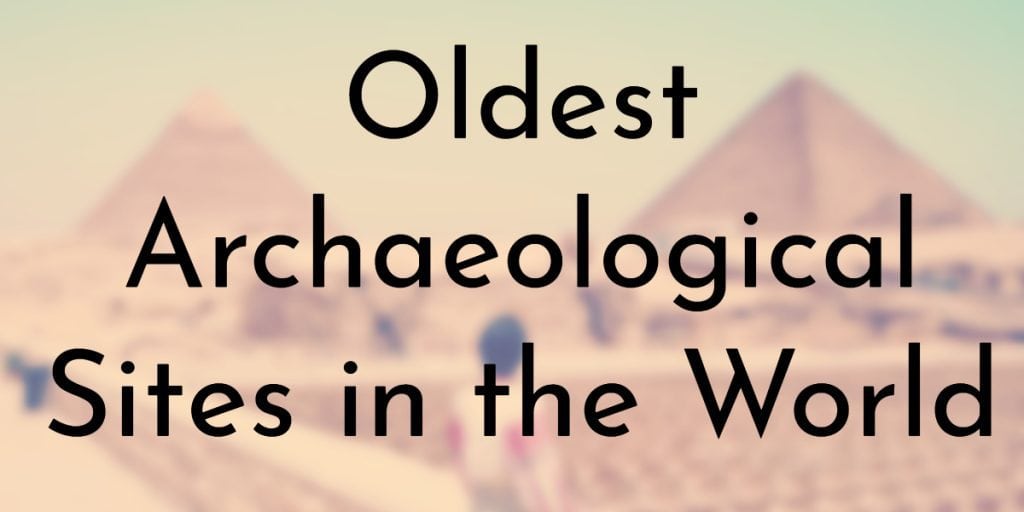The Neolithic Revolution, which started around 10,000 BCE is one of the most important periods in human history as it marks the beginnings of true civilization. Our nomadic hunter-gather ancestors began settling down around this time and developed agriculture.
While some of the earliest known settlements uncovered date back to this time, many of the archaeological sites on this list predate them by tens of thousands of years. These ancient archaeological sites were temporary settlements and contain some of the earliest art. Nearly all of the archaeological sites on this list are protected UNESCO World Heritage Sites.
9. Tell es-Sultan (Jericho)
Age: over 10,000 years (c.9000 BCE)
Location: Jericho, West Bank
Year Discovered/Excavated: 1868
Main Use(s): : Settlement
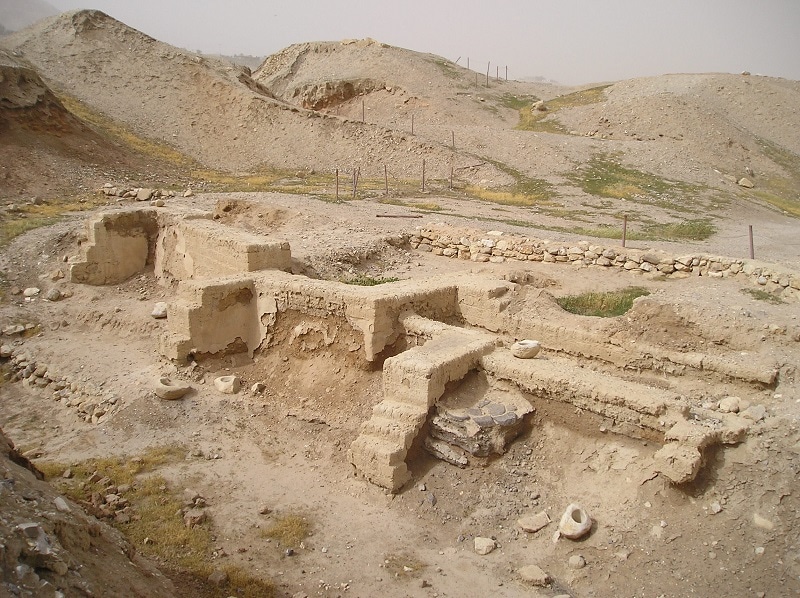
Tell es-Sultan is the oldest part of Jericho and is often called the oldest town on earth. Early hunter-gatherers settled in Tell es-Sultan around 9000 BCE and continued to fortify and expand the site. By 7000 BCE, Tell es-Sultan was a large fortified town — it was around this time that the Wall and Tower of Jericho were built to protect the settlement.
The first round of excavations at Tell es-Sultan started in 1868, which has been followed by several successive excavations. Flint tools and the mudbrick houses have been uncovered at Tell es-Sultan.
Currently, Tell es-Sultan is on UNESCO’s tentative list and is seeking protected World Heritage Site status.
8. Göbekli Tepe
Age: over 11,000 years (c.9600 BCE)
Location: Southeastern Anatolia Region of Turkey
Year Discovered/Excavated: 1963
Main Use(s): : Unknown for sure, believed to be world’s oldest temple
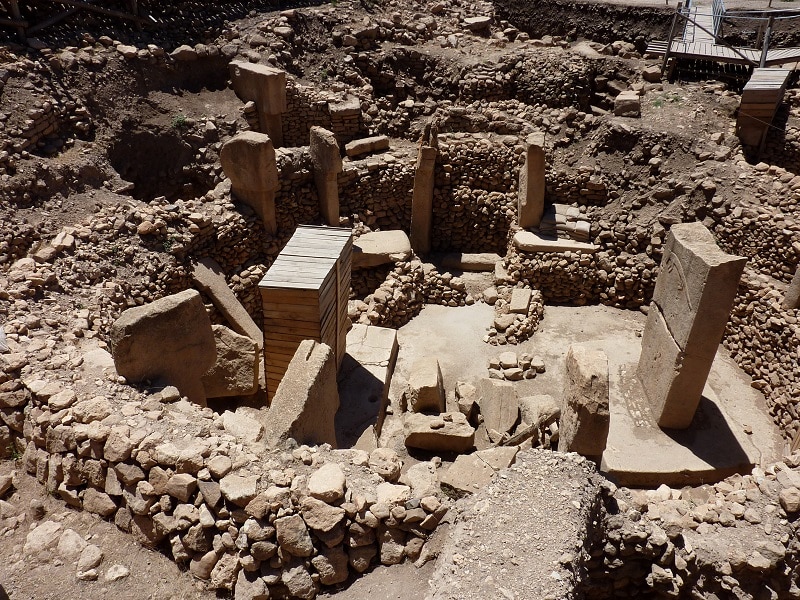
Göbekli Tepe is over 11,000 years old and is currently believed to be the site of the world’s oldest temple. The site was first discovered in 1963 and anthropologists initially thought the broken limestone slabs were gravestones. They were uninterested in Göbekli Tepe because they thought it was just an abandoned medieval cemetery.
However, German archaeologist Klaus Schmidt rediscovered the site in 1994 and knew right away that the site was something more. Schmidt continued to lead the excavation team until his death in 2014 and he believed that Göbekli Tepe must have been a very early Neolithic temple. In 2018, Göbekli Tepe was designated as a UNESCO World Heritage Site.
7. Tell Qaramel
Age: over 12,000 years (c.10,900 BCE)
Location: Aleppo Governate, Syria
Year Discovered/Excavated: Late 1970s; excavation started in 1999
Main Use(s): : Settlement containing the world’s oldest towers
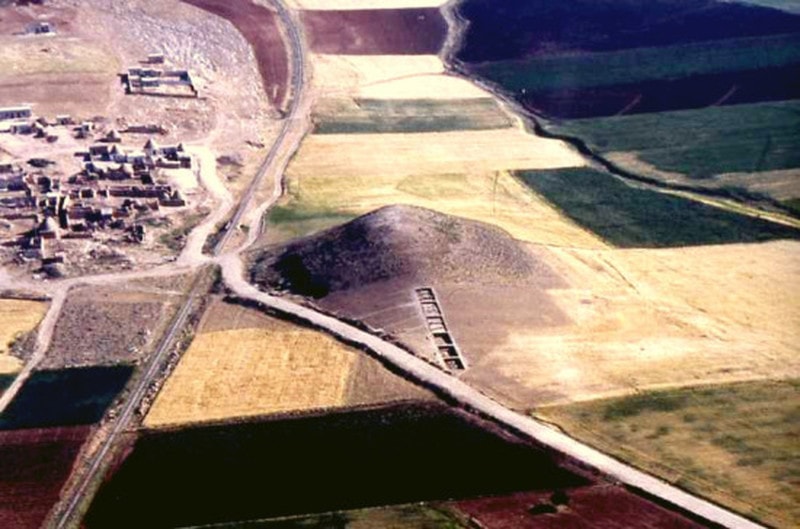
Evidence of Tell Qaramel was discovered in the late 1970s, but excavation of the site did not begin until 1999. Archaeological excavations revealed that the Tell Qaramel settlement existed between 10,900 to 8800 BCE. There is more recent research that suggests that Tell Qaramel may be even older.
Researchers have uncovered several artifacts from Tell Qaramel, including flint, bone, and stone objects such as limestone vessels and decorated cholorite. There are also several round towers at Tell Qaramel and the oldest dates to about 10,650 BCE. They are the oldest towers in the world and predate the famed Tower of Jericho by several centuries.
6. Lascaux Cave
Age: about 17,000 years (c.15,000 BCE)
Location: Montignac, France
Year Discovered/Excavated: 1940
Main Use(s): : Cave complex with one of the largest collections of cave paintings in the world
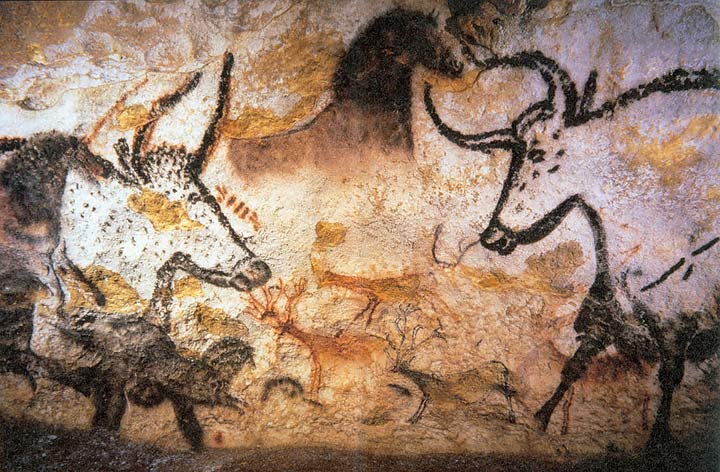
Although it doesn’t have the oldest cave paintings in the world, Lascaux Cave is probably the most famous prehistoric cave painting sites in the world. Since its discovery in 1940, Lascaux has been extensively studied. The cave’s walls are covered in pictures of animals, human figures, and signs. There are over 6,000 representations of animals, including horses, stags, aurochs, ibexes, and bison.
Recently, a complete replica of Lascaux Cave was opened to the public. The replica represents the whole of the original cave accessible to the public, reproduced with the techniques and the art of the Perigord Facsimile Studio (PFS) and the Artistic Concrete Atelier (AAB).
5. Cave of Altamira
Age: over 27,000 years old (c.25,000 BCE)
Location: Santillana del Mar, Cantabria, Spain
Year Discovered/Excavated: 1868; not excavated until 1879
Main Use(s): : Cave settlement containing some of the oldest cave paintings in the world
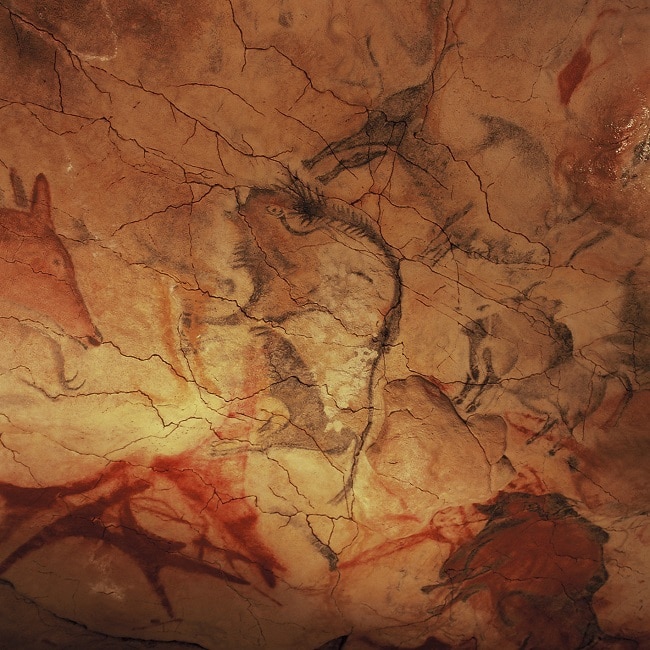
The Cave of Altamira is one of Spain’s most famous archaeological sites. However, Altamira wasn’t always a well-known or respected site. When Altamira was first excavated in 1879, many scholars rejected the authenticity of the cave paintings because they were too different from the ones found in France. Due to this, Altamira was largely forgotten for many years before it was revisited in 1902 and finally taken seriously.
Altamira had been open to the public for many years, but in 2002 it was closed to visitors when mold started to appear on some of the paintings. Researchers determined that tourists and the use of artificial light was damaging Altamira. In 2014, Altamira was partially reopened to the public. Each week, five visitors chosen at random through a lottery are allowed to view Altamira as long as they wear protective suits.
4. Murujuga
Age: about 30,000 years old (c.28,000 BCE)
Location: Dampier Archipelago, Western Australia
Year Discovered/Excavated: N/A; been in use by indigenous people for thousands of years
Main Use(s): : Sacred indigenous land containing one of the largest collections of petroglyphs
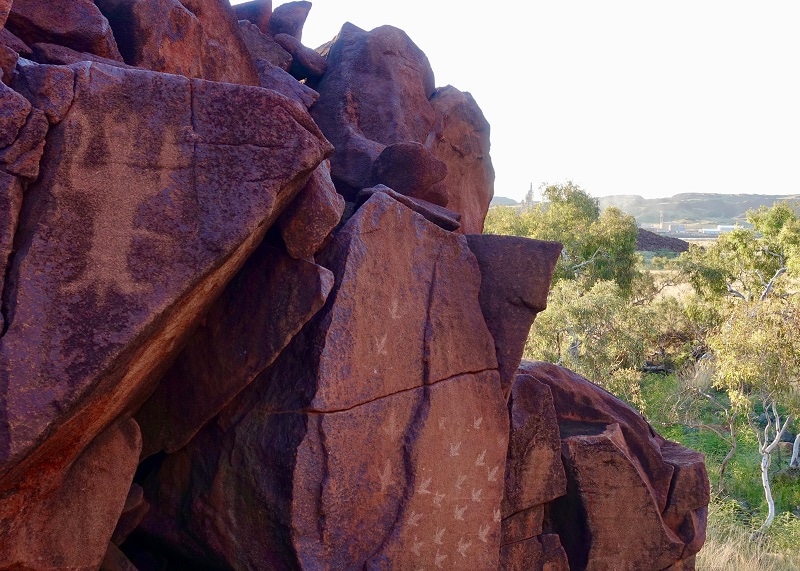
Murujuga or the Burrup Peninsula is a sacred place to the Aboriginal people of Australia. The site is also home to some of the oldest petroglyphs (engraved rock art) in the world – it is also one of the biggest collections of rock art, with at least a million individual works of art.
The petroglyphs date back to about 30,000 years ago, although the Aboriginals may have been living in the region for over 50,000 years, and depict several now extinct species of animals in Australia. Researchers say that the rock art shows this part of Australia’s environment has changed over time. In recent years, the Murujuga Aboriginal Corporation has been seeking UNESCO World Hertiage status for the site.
3. Chauvet Cave
Age: about 36,000 years old (c.34,000 BCE)
Location: Ardèche, France
Year Discovered/Excavated: 1994
Main Use(s): : Cave settlement containing some of the best-preserved cave paintings in the world
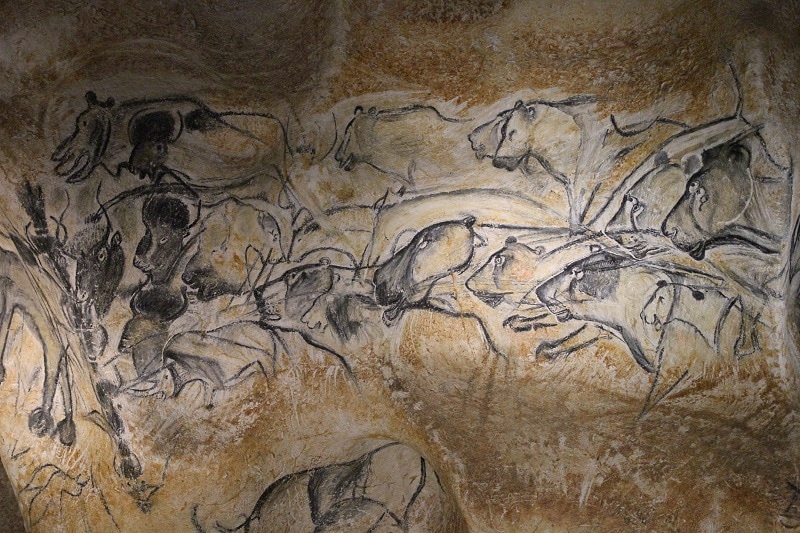
The Chauvet Cave in France is one of the most important sites of prehistoric art in the world. The cave paintings in Chauvet Cave are some of the most beautiful and well-preserved and clearly depict animals like rhinos, lions, and deer.
While there has been some disagreement over the age of site, recent research now places human occupation of Chauvet to around 36,000 years ago. Archaeological evidence suggests that there was a second period of use of the Chauvet Cave between 31,000 to 28,000 years ago that lasted for 2,000 to 3,000 years. To protect Chauvet Cave and the paintings, it was sealed off from the public not long after it was first discovered in 1994. A replica of Chauvet Cave so that visitors could safely admire the paintings, drawings, and engravings.
2. Cave of El Castillo
Age: over 40,800 years old (c.38,000 BCE)
Location: Caves of Monte Castillo, Puento Viesgo, Cantabria, Spain
Year Discovered/Excavated: 1903
Main Use(s): : Cave settlement containing oldest known cave paintings
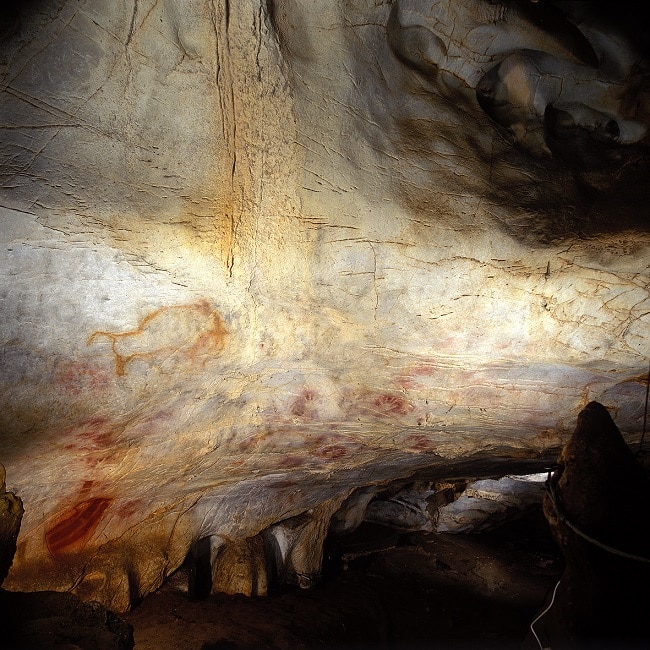
El Castillo is famous for being home to the world’s oldest cave paintings, which are over 40,800 years old. The cave was first discovered in 1903 by H. Alcalde del Río and El Castillo has been researched extensively since then.
The cave paintings were reanalyzed in 2012 and their dates were pushed back. The new dates suggest that the cave paintings may have been created by Neanderthals instead of early modern humans. However, the research team says that more evidence is needed to support this claim.
1. Theopetra Cave
Age: about 135,000 years ago (c.133,000 BCE)
Location: Thessaly, Greece
Year Discovered/Excavated: 1987
Main Use(s): : Cave settlement containing the oldest known human-made structure
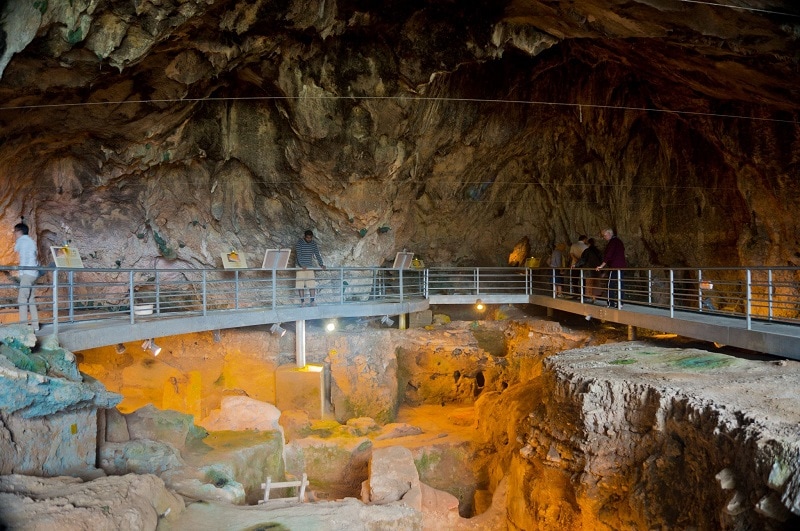
In 2012, following several decades of research and excavations, researchers revealed that humans were living in Theopetra Cave over 135,000 years ago, making it the oldest archaeological site in the world.
The research team led by Ν. Kyparissi-Apostolika originally thought that human occupation in the cave dated to at least 50,000 years ago. However, they discovered children’s footprints that pushed back Theopetra’s use to over 80,000 years earlier.
Theopetra Cave is a treasure trove of artifacts from several different periods, including the Palaeolithic, Mesolithic, and Neolithic periods. The site is also home to a 23,000 year old wall that was most likely built to protect the cave’s residents from cold winds — it is one of the oldest known man made structures in the world.
OTHER POSTS YOU MAY BE INTERESTED IN


